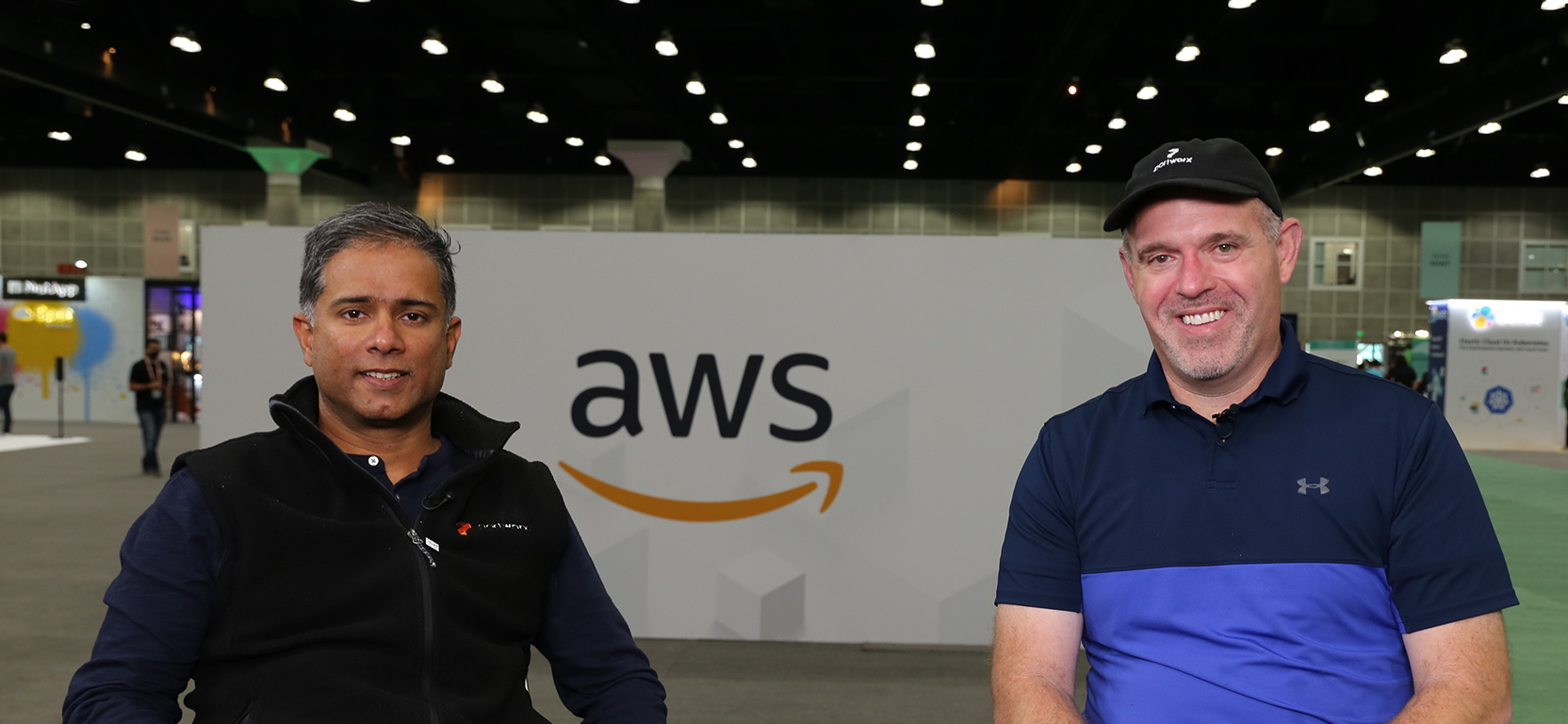 NEWS
NEWS
 NEWS
NEWS
 NEWS
NEWS
The demand by organizations for data management and orchestration between on-premises and cloud resources is at an all-time high.
This paradigm has, in turn, created a burgeoning clamor for Kubernetes containerization. CHG Healthcare, a healthcare staffing solutions provider and client of Portworx by Pure Storage Inc., is leaning on Portworx to digitize and provide richer experiences for its customers, which include doctors and hospitals.
“Even before COVID, we had this task … how are we going to get out into the cloud?” said Micah Coletti (pictured, right), principal platform engineer at CHG Healthcare. “And we chose to follow a very much a cloud native strategy. And the platform of choice, it just made sense with Kubernetes. We’re very much focused on an … event-driven architecture.”
Coletti and Venkat Ramakrishnan (pictured, left), vice president of products at Portworx, spoke to Lisa Martin, host of theCUBE, SiliconANGLE Media’s livestreaming studio, during KubeCon + CloudNativeCon NA. They discussed the new and existing applications of Kubernetes across multiple sectors. (* Disclosure below.)
“If you are a customer who wants a lot of control over your applications and costs, Portworx can deliver that for you in your data center,” Ramakrishnan stated. “If you want to run it in the cloud, and you still want to leverage the agility of the cloud and scale, Portworx delivers a solution for you as well.”
The past 18 months have created a strong need for a rejuvenation of the healthcare sector. Given the ongoing pandemic, the medical industry and other related sub-sectors are banking on technology to deliver services faster, efficiently, and at the required scale.
After assessing features like storage relay overlay, high-performance storage, security and backup/recovery, CHG found that Portworx was the right match.
“That allowed us to have a very smooth transition off of MSK onto Kubernetes, saving us a significant amount of money per month, and to leverage that already-existing hardware and already-existing compute memory and moved right to Portworx,” Coletti said.
With regards to the challenges being faced by Kubernetes-reliant organization, one that stands out is migrating to new clusters, according to Coletti. The ability to maintain a consistent flow, given Kubernetes’ growth, can often pose challenges for developers.
“With Portworx, we actually were able to make that to where we could spin up a brand new cluster and with Portworx shift all our applications, services and data and migrate it completely over. Portworx handles all of that for us and stands up that new cluster in less than a day,” he concluded.
Here’s the complete video interview, part of SiliconANGLE’s and theCUBE’s coverage of KubeCon + CloudNativeCon NA. (* Disclosure: This is an unsponsored editorial segment. However, theCUBE is a paid media partner for KubeCon + CloudNativeCon NA 2021. Red Hat, the Cloud Native Computing Foundation and other sponsors of theCUBE’s event coverage have no editorial control over content on theCUBE or SiliconANGLE.)
THANK YOU